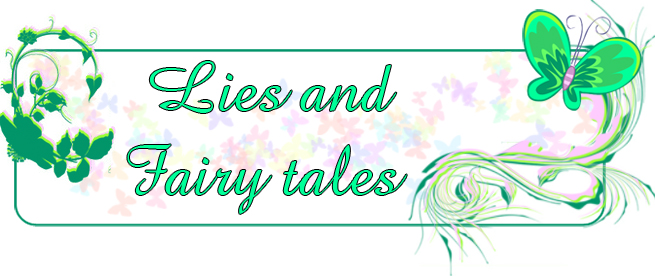
In visual art and literature, Romanticism found recurrent themes in the evocation or criticism of the past, the cult of "sensibility" with its emphasis on women and children, the heroic isolation of the artist or narrator, and respect for a new, wilder, untrammeled and "pure" nature. Furthermore, several romantic authors, such as Edgar Allan Poe and Nathaniel Hawthorne, based their writings on the supernatural/occult and human psychology.
The Scottish poet James Macpherson influenced the early development of Romanticism with the international success of his Ossian cycle of poems published in 1762, inspiring both Goethe and the young Walter Scott.
An early German influence came from Johann Wolfgang Goethe whose 1774 novel The Sorrows of Young Werther had young men throughout Europe emulating its protagonist, a young artist with a very sensitive and passionate temperament. At that time Germany was a multitude of small separate states, and Goethe's works would have a seminal influence in developing a unifying sense of nationalism. Another philosophic influence came from the German idealism of Johann Gottlieb Fichte and Friedrich Schelling, making Jena (where Fichte lived, as well as Schelling, Hegel, Schiller and the brothers Schlegel) a center for early German romanticism ("Jenaer Romantik"). Important writers were Ludwig Tieck, Novalis (Heinrich von Ofterdingen, 1799) and Friedrich Hoelderlin. Heidelberg later became a center of German romanticism, where writers and poets such as Clemens Brentano, Achim von Arnim, and Joseph Freiherr von Eichendorff met regularly in literary circles. Important motifs in German Romanticism are travelling, nature, and ancient myths. The later German Romanticism of, for example, E. T. A. Hoffmann's Der Sandmann (The Sandman), 1817, and Joseph Freiherr von Eichendorff's Das Marmorbild (The Marble Statue), 1819, was darker in its motifs and has gothic elements.

Romanticism in British literature developed in a different form slightly later, mostly associated with the poets William Wordsworth and Samuel Taylor Coleridge, whose co-authored book Lyrical Ballads (1798) sought to reject Augustan poetry in favour of more direct speech derived from folk traditions. Both poets were also involved in utopian social thought in the wake of the French Revolution. The poet and painter William Blake is the most extreme example of the Romantic sensibility in Britain, epitomised by his claim “I must create a system or be enslaved by another man's.” Blake's artistic work is also strongly influenced by Medieval illuminated books. The painters J. M. W. Turner and John Constable are also generally associated with Romanticism. Lord Byron, Percy Bysshe Shelley, Mary Shelley and John Keats constitute another phase of Romanticism in Britain.
In predominantly Roman Catholic countries Romanticism was less pronounced than in Germany and Britain, and tended to develop later, after the rise of Napoleon. François-René de Chateaubriand is often called the "Father of French Romanticism". In France, the movement is associated with the nineteenth century, particularly in the paintings of Théodore Géricault and Eugène Delacroix, the plays, poems and novels of Victor Hugo (such as Les Misérables and Ninety-Three), and the novels of Stendhal.
In Russia, the principal exponent of Romanticism is Alexander Pushkin. Mikhail Lermontov attempted to analyse and bring to light the deepest reasons for the Romantic idea of metaphysical discontent with society and self, and was much influenced by Lord Byron. The poet Fyodor Tyutchev was also an important figure of the movement in Russia, and was heavily influenced by the German Romantics.
Romanticism played an essential role in the national awakening of many Central European peoples lacking their own national states, not least in Poland, which had recently lost its independence when Russia's army crushed the Polish Rebellion under the reactionary Nicholas I. Revival and reinterpretation of ancient myths, customs and traditions by Romantic poets and painters helped to distinguish their indigenous cultures from those of the dominant nations and crystallise the mythography of Romantic nationalism. Patriotism, nationalism, revolution and armed struggle for independence also became popular themes in the arts of this period. Arguably, the most distinguished Romantic poet of this part of Europe was Adam Mickiewicz, who developed an idea that Poland was the Messiah of Nations, predestined to suffer just as Jesus had suffered to save all the people.
In the United States, the romantic gothic made an early appearance with Washington Irving's Legend of Sleepy Hollow 1820) and Rip Van Winkle (1819), followed from 1823 onwards by the Leatherstocking tales of James Fenimore Cooper, with their emphasis on heroic simplicity and their fervent landscape descriptions of an already-exotic mythicized frontier peopled by "noble savages", similar to the philosophical theory of Rousseau, exemplified by Uncas, from The Last of the Mohicans. There are picturesque "local color" elements in Washington Irving's essays and especially his travel books. Edgar Allan Poe's tales of the macabre and his balladic poetry were more influential in France than at home, but the romantic American novel developed fully in Nathaniel Hawthorne's atmosphere and melodrama. Later Transcendentalist writers such as Henry David Thoreau and Ralph Waldo Emerson still show elements of its influence, as does the romantic realism of Walt Whitman. But by the 1880s, psychological and social realism was competing with romanticism in the novel. The poetry of Emily Dickinson—nearly unread in her own time—and Herman Melville's novel Moby-Dick can be taken as epitomes of American Romantic literature. As in England, Germany, and France, literary Romanticism had its counterpart in American visual arts, most especially in the exaltation of untamed America found in the paintings of the Hudson River School. Painters like Thomas Cole, Albert Bierstadt and Frederic Edwin Church and others often combined a sense of the sublime with underlying religious and philosophical themes. Thomas Cole's paintings feature strong narratives as in The Voyage of Life series painted in the early 1840s that depict man trying to survive amidst an awesome and immense nature, from the cradle to the grave.
Source: Wikipedia



No comments:
Post a Comment